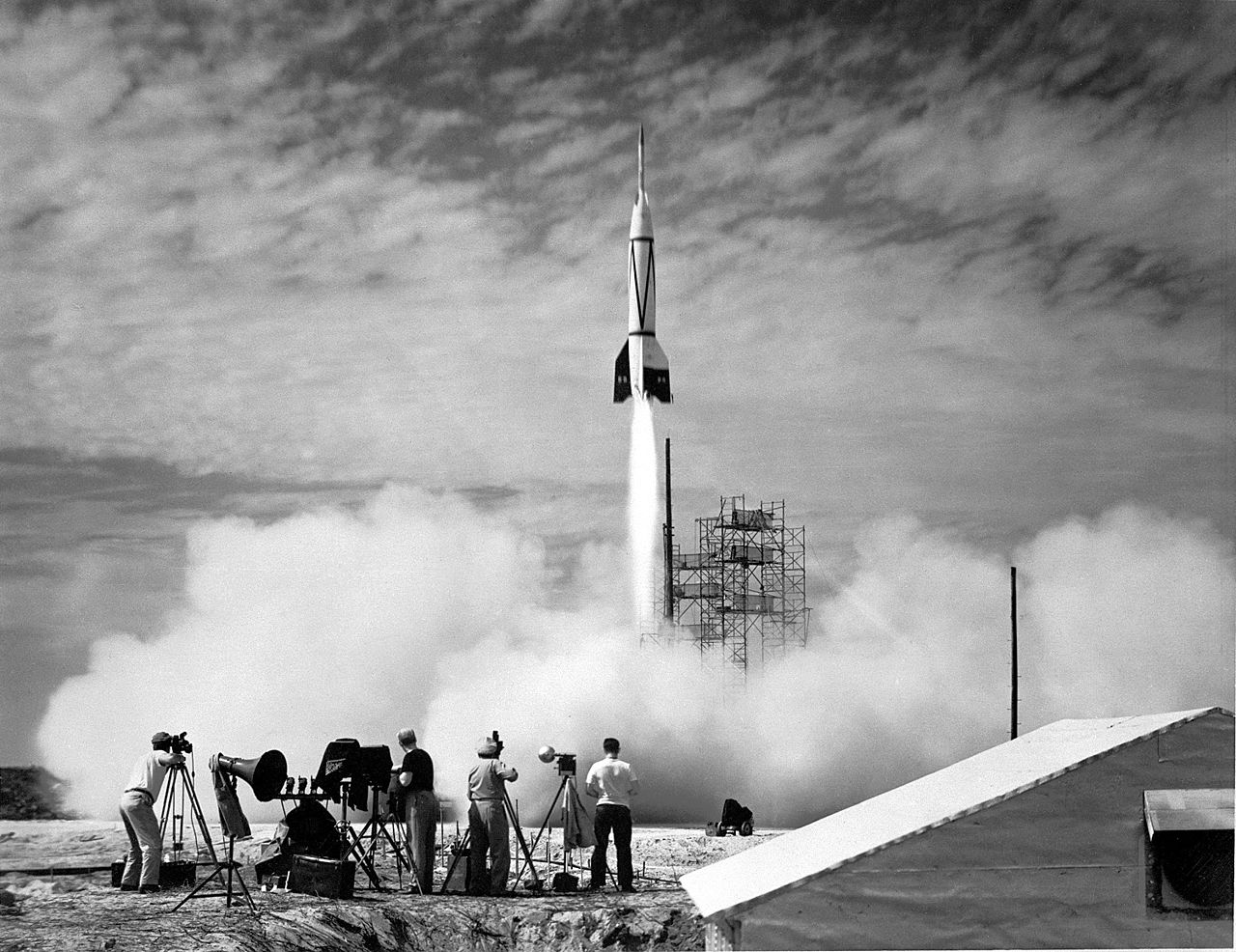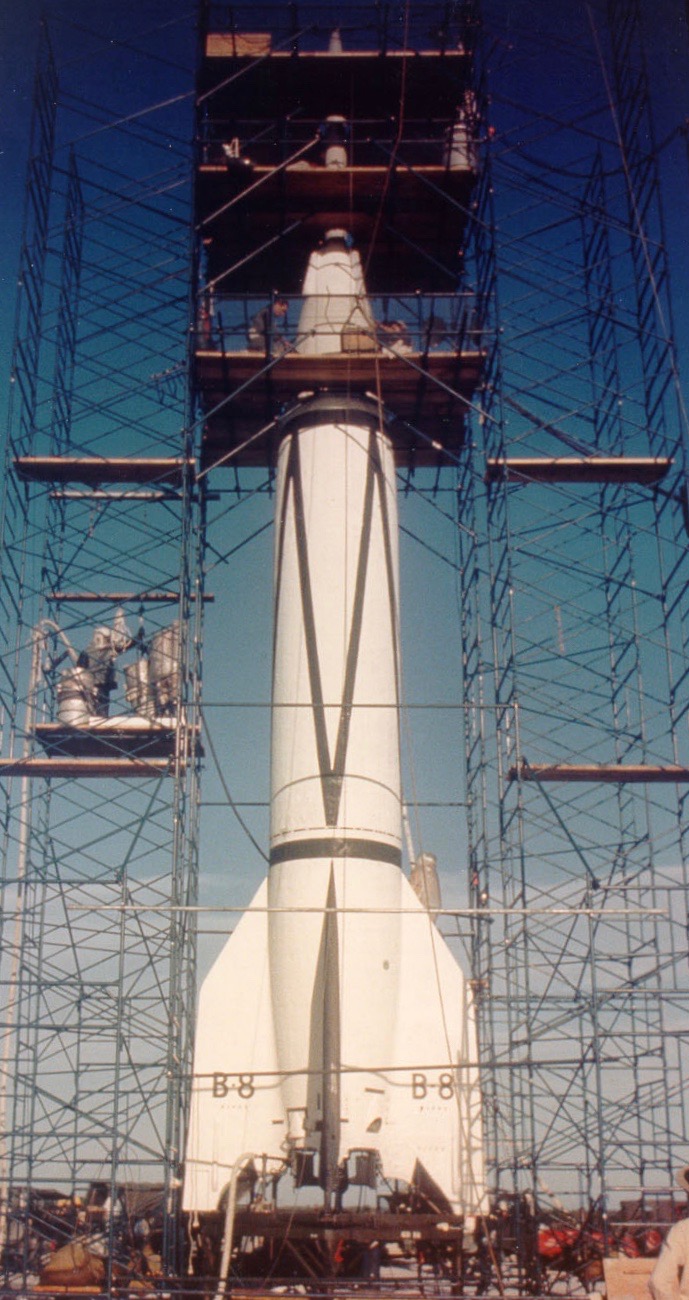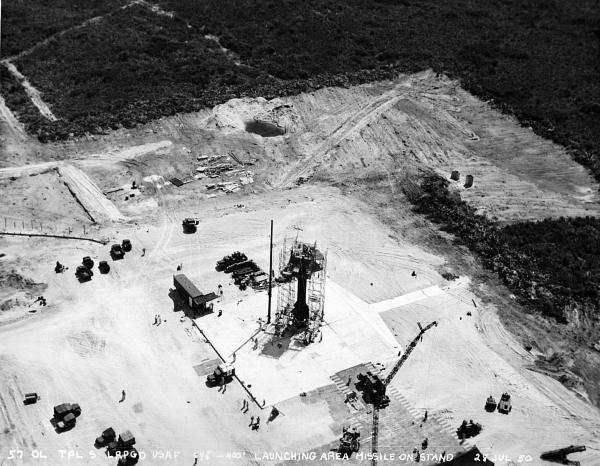
24 July 1950: The first rocket launch at Cape Canaveral, Florida, took place. Bumper 8 was a two-stage rocket consisting of a captured German V-2 ballistic missile as the first stage and a WAC Corporal sounding rocket as the upper, second, stage. The rocket lifted off from Launch Complex 3 at the Cape Canaveral Air Force Station and followed a ballistic trajectory over the Joint Long Range Proving Ground. This was a low-angle atmospheric flight. The WAC Corporal reached an altitude of 10 miles (16.1 kilometers) and traveled 200 miles (322 kilometers) downrange.
The Bumper Project was a U.S. Army Ordnance Corps program, with overall responsibility contracted to the General Electric Corporation. The V-2s used in the Bumper Project were modified at accept the WAC Corporal second stage. Compressed air was used to separate the stages after the V-2 engine was cut off.
The V2, or Vergeltungswaffen 2 (also known as the A4, Aggregat 4) was a ballistic missile weighing 28,000 pounds (12,500 kilograms) when fully loaded. It carried a 2,200 pound (1,000 kilogram) explosive warhead of amatol, a mixture of TNT and ammonium nitrate. Propellant was a 75/25 mixture of of ethanol and water with liquid oxygen as oxidizer.
When launched, the rocket engine burned for 65 seconds, accelerating the rocket to 3,580 miles per hour (5,761 kilometers per hour) on a ballistic trajectory. The maximum range of the rocket was 200 miles (322 kilometers) with a peak altitude between 88 and 128 miles (142–206 kilometers), depending on the desired range. On impact, the rocket was falling at 1,790 miles per hour (2,881 kilometers per hour).
The V-2 could only hit a general area and was not militarily effective. Germany used it against England, France, The Netherlands and Belgium as a terror weapon. More than 3,200 V-2 rockets were launched against these countries.
At the end of World War II, many V-2 rockets and components were captured by Allied forces and were brought to the United States for research, along with many of the German engineers, scientists and technicians who had worked on the German rocket program. Others were captured by the Soviet army.

The WAC Corporal was a liquid-fueled hypergolic rocket. After separation from the first stage, the WAC Corporal was capable of reaching more than 80 miles (129 kilometers). It was designed by the Jet Propulsion Laboratory in Pasadena, California, and built by Douglas Aircraft. The rocket carried small research packages into the upper atmosphere. The two-stage rocket was used to develop launch techniques and to refine the separation of upper stages at very high speed.
Now named the Kennedy Space Center, but known simply as “The Cape,” the location was selected to allow rocket testing to take place over the Atlantic Ocean, minimizing danger to persons and property. As one of the points within the United States closest to the Equator, rockets launched on an eastward trajectory receive additional velocity due to the Earth’s rotation.

© 2016, Bryan R. Swopes
It looks like they are standing right next to the rocket.